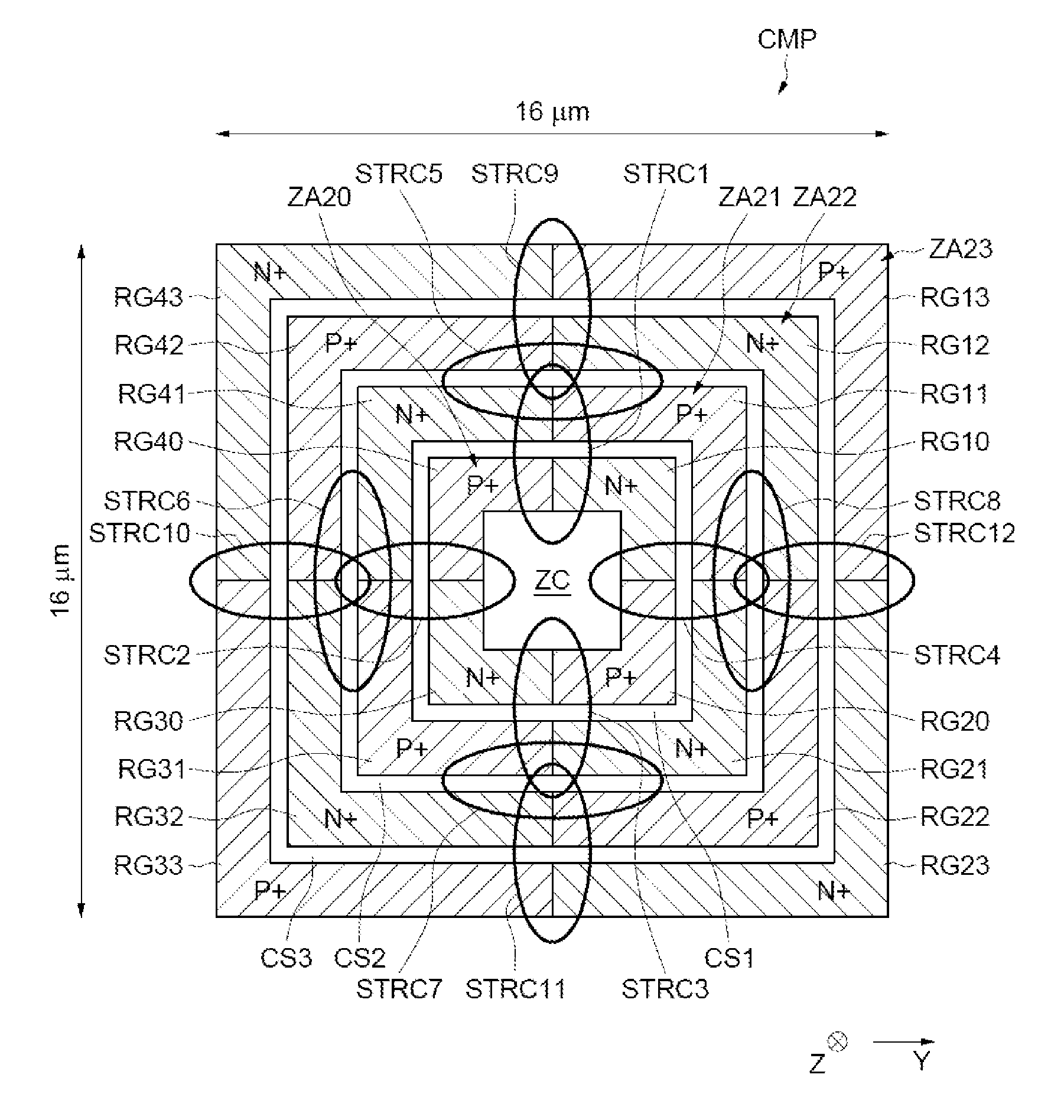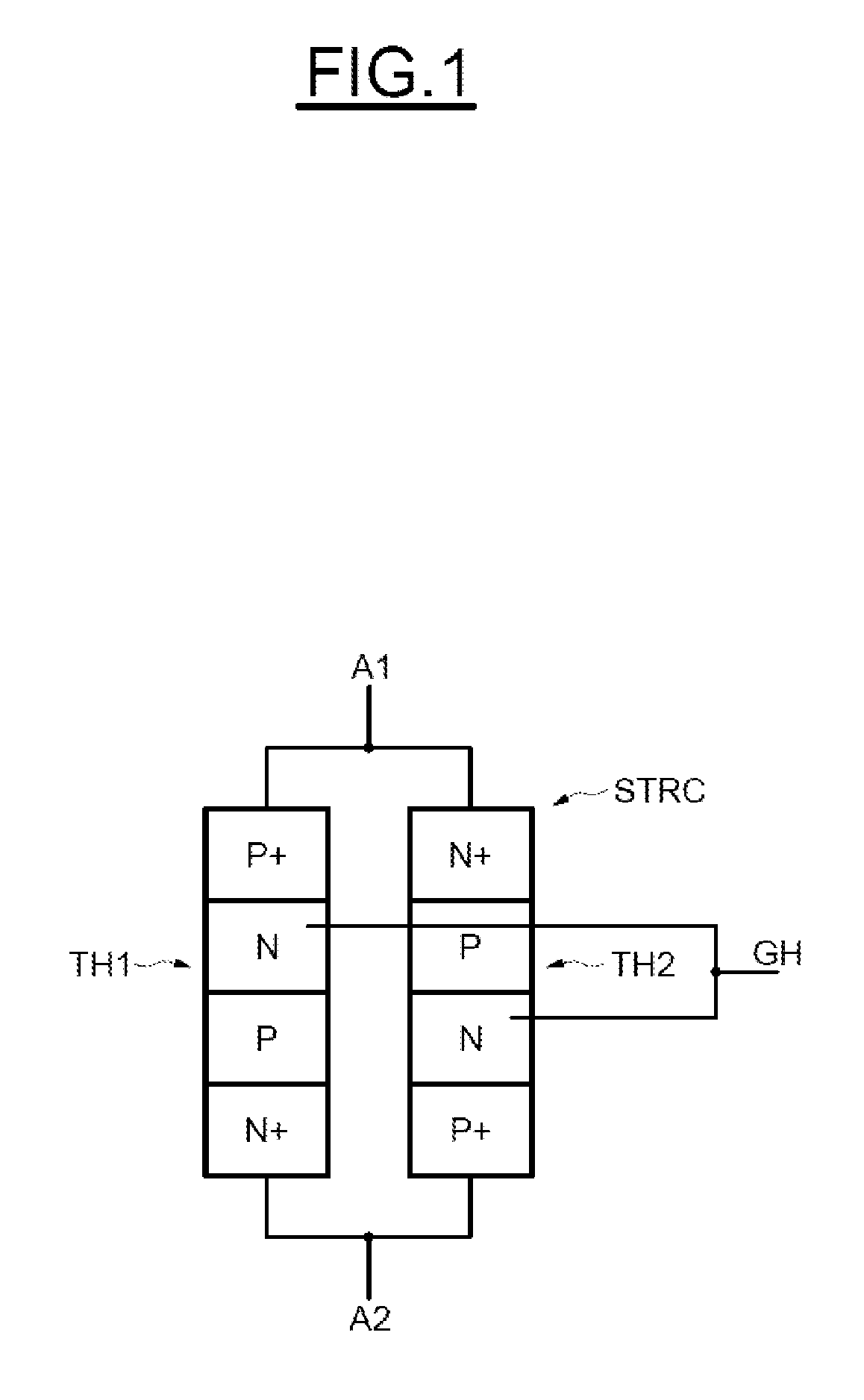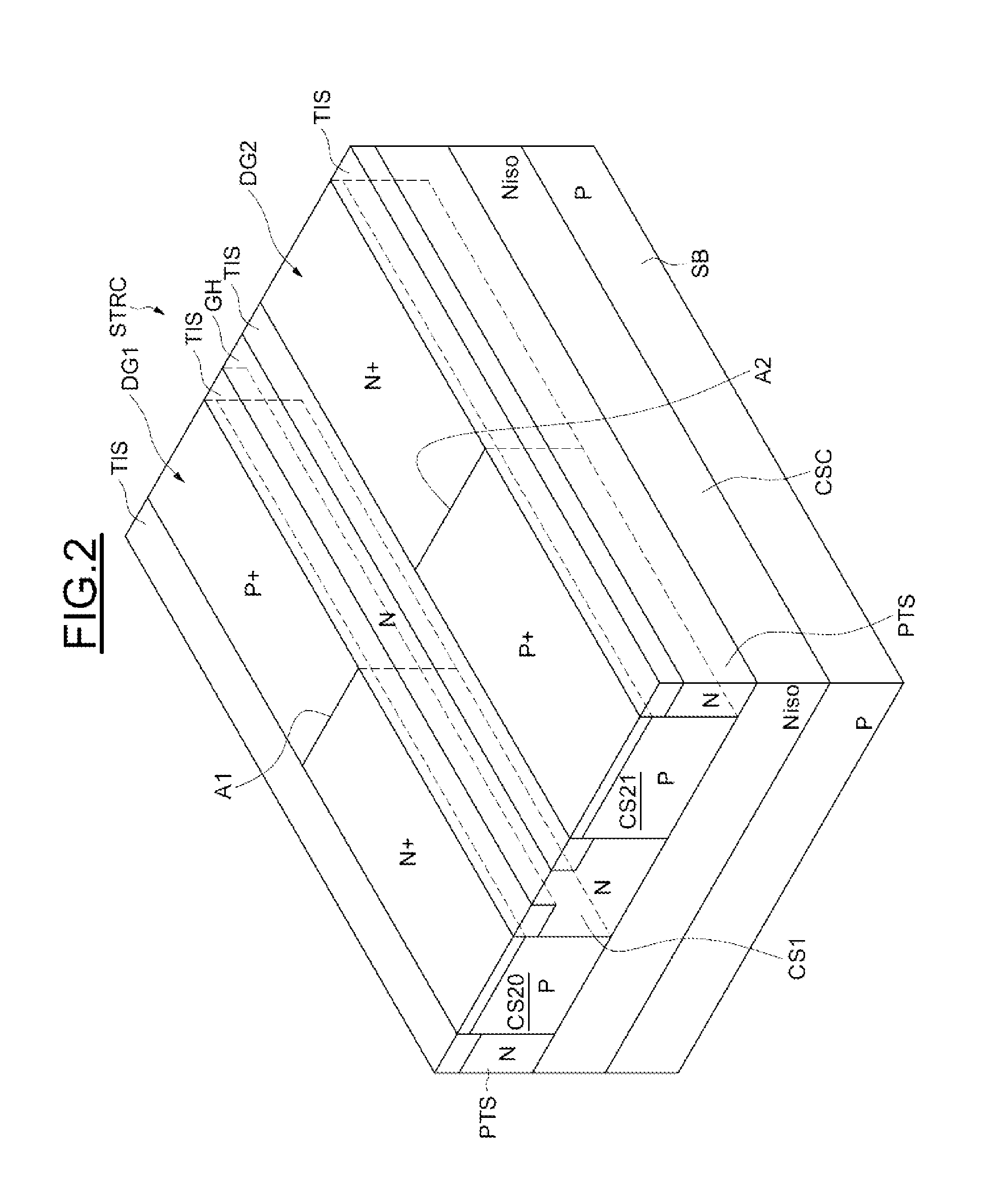Electronic Device for Protection against Electrostatic Discharges, with a Concentric Structure
a concentric structure and electrostatic discharge technology, applied in the direction of semiconductor devices, diodes, electrical devices, etc., can solve the problems of silicon surface area occupation and other problems, and achieve the effect of reducing parasitic capacitance, reducing surface area, and reducing the integrity of input/output signals
- Summary
- Abstract
- Description
- Claims
- Application Information
AI Technical Summary
Benefits of technology
Problems solved by technology
Method used
Image
Examples
Embodiment Construction
[0027]In FIG. 1, the reference STRC denotes a triac structure forming, as described below, an elementary member of one embodiment of an electronic component according to the invention.
[0028]This triac structure STRC includes two thyristors TH1, TH2. In this case, the thyristor TH1 includes four semiconductor zones having, respectively, p-, n-, p- and n-type conductivity, while the thyristor TH2 includes four semiconductor zones having, respectively, n-, p-, n- and p-type conductivity.
[0029]The p+ and n+ type end semiconductor zones of the two thyristors TH1, TH2 form the two electrodes A1, A2 of the triac structure STRC.
[0030]Additionally, the other two semiconductor zones, having n-type conductivity, of the two thyristors TH1 and TH2 form a single gate GH for the triac structure.
[0031]In topological terms, as shown in FIG. 2, the triac structure STRC includes, within a semiconductor substrate SB, having p-type conductivity for example, two semiconductor tanks CS20 and CS21, each ha...
PUM
 Login to View More
Login to View More Abstract
Description
Claims
Application Information
 Login to View More
Login to View More - R&D
- Intellectual Property
- Life Sciences
- Materials
- Tech Scout
- Unparalleled Data Quality
- Higher Quality Content
- 60% Fewer Hallucinations
Browse by: Latest US Patents, China's latest patents, Technical Efficacy Thesaurus, Application Domain, Technology Topic, Popular Technical Reports.
© 2025 PatSnap. All rights reserved.Legal|Privacy policy|Modern Slavery Act Transparency Statement|Sitemap|About US| Contact US: help@patsnap.com



